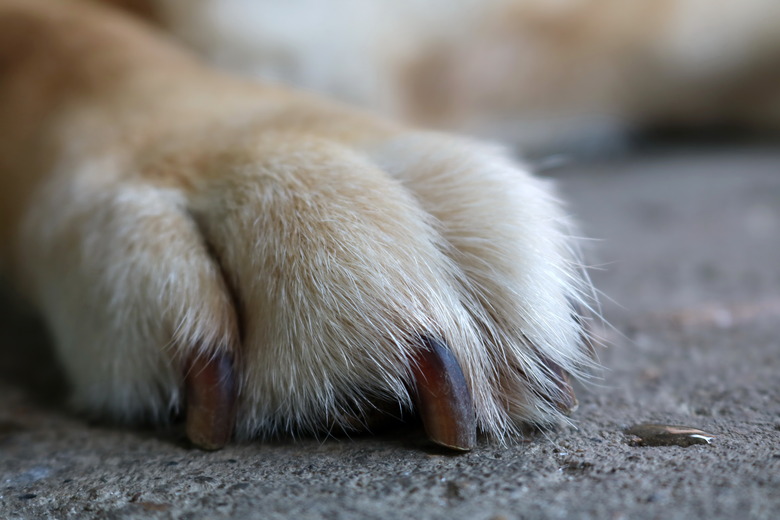Causes Of Canine Paw Knuckling
Just like us, dogs can experience arthritis and other issues that alter their gait. A little stiffness is perfectly normal, but knuckling is not normal. Knuckling in dogs refers to when a dog bends his wrist, flipping his paw under his leg and walking on the top of his foot rather than on the bottom. There are several conditions that can cause knuckling, many of which your vet can fix.
A sore paw
A sore paw
If your dog's front paw is curled under, it may simply mean that she has a sore foot. Dogs sometimes step on things that cut open or irritate their paw pads. They can also have issues with their nails or suffer from burns when walking on hot asphalt. Knuckling can occur on any foot and is easily treated when caused by a sore or wound of some kind.
Knuckling caused by a foot injury often comes on quite suddenly and resolves when the wound heals. A trip to the vet is still a good idea, however. Correcting the problem quickly ensures that your dog doesn't injure the top of his foot as well by dragging it along the ground.
Carpal flexural deformity
Carpal flexural deformity
Growth spurts in puppies can cause a condition known as carpal flexural deformity, in which the wrist joint bulges out, forcing the foot to knuckle under. Fortunately, this issue is easily treated by limiting the puppy's exercise and, when necessary, placing a temporary cast on the leg. Physical therapy exercises are also quite helpful. In rare cases, your vet will perform a surgery to fuse the joint into its proper position.
Intervertebral disc disease
Intervertebral disc disease
Most commonly seen in older dogs and large breeds, intervertebral disc disease occurs when the discs between the spinal vertebra start to deteriorate. The damaged discs allow the bones of the spine to rub against one another, potentially damaging the spine itself and causing inflammation that can push on certain nerves.
Knuckling is a sign of IDD, as is frequent stumbling, back arching, stiffness, and a general lack of coordination. In most cases, IDD is successfully treated with steroids and anti-inflammatory medications. Severe cases sometimes require surgical intervention, but this is not common.
Degenerative myelopathy knuckling in dogs
Degenerative myelopathy knuckling in dogs
In degenerative myelopathy, the sheathing that surrounds a dog's spinal cord slowly deteriorates, making it difficult for nerves to relay messages to each other. As the nerve impulses fail, the dog loses control over certain muscles and may start knuckling. You may also notice your dog swaying, struggling to get up, and falling over easily when gently pushed. Because the symptoms of degenerative myelopathy are largely neurological, they may leave you wondering, "Did my dog just have a stroke?"
Unfortunately, degenerative myelopathy has no cure. It is a progressive disorder and will continue to worsen until the dog can no longer control her legs and other parts of her body. The good news is that failing nerves don't conduct any impulses, including pain. Your dog can continue to live a happy, pain-free life for some time after degenerative myelopathy takes hold.
Tumors and knuckling
Tumors and knuckling
In very rare instances, tumors can cause knuckling. Sometimes, tumors grow in locations where they press on certain nerves or parts of the spinal cord that cause the dog to turn his paw. Both cancerous and benign tumors can cause knuckling depending on their location.
In many cases, removing the tumor resolves the issue. Depending on the tumor's location, however, the risks of surgery may outweigh the benefits. If your vet does remove the tumor, he can test the tissue to make sure it's benign and not harmful.
